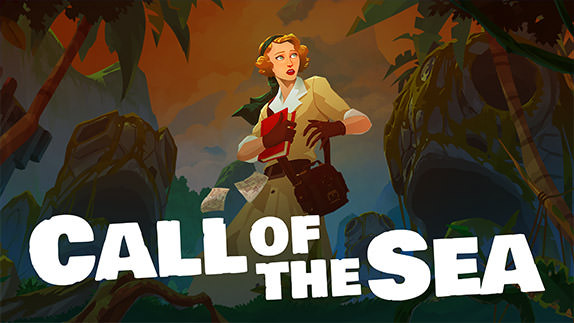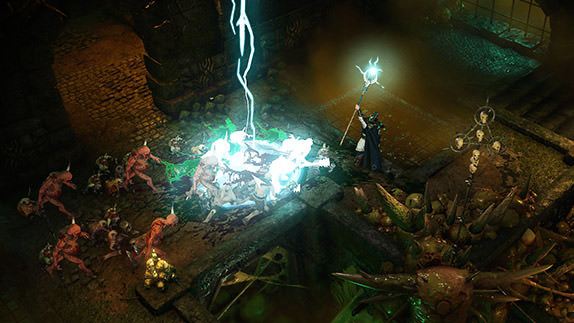BioShock Infinite Review

 By Marcus Jones
Posted on April 11, 2013
By Marcus Jones
Posted on April 11, 2013
Developed by Irrational Games and published once again by 2K Games, players re-enter the fantastic mythos of the BioShock universe with new entry BioShock Infinite. The plot is centered on Booker DeWitt, a former Pinkerton agent and a man deep in debt. Attempting to deliver on a deal guaranteeing the erasure of his large debt, Booker is sent on a mission to extract Elizabeth from the floating city of Columbia. Columbia, formerly part of the U.S. until its secession, is a technological marvel in the skies controlled by an extremely religious and devout zealot Father Comstock.
Comstock, who fancies himself a prophet, runs his blissful utopia against the dangers of the Sodom below and the ones within. His Columbia is meant to be a pure city in his eyes, focusing on uplifting of the true master race (whites) and using religion as the driving force for Mankind’s better future. Yeah, it’s a bit much.
It’s hard not to talk about race, religion, and other major political/social topics in relation to BioShock Infinite. While not nearly as socially damning as Andrew Ryan’s reasoning to create Rapture, Comstock’s Columbia is drawn almost completely from the extremely outdated societal norms of the late 1800’s, where blacks were still very much not accepted into general culture as anything other than menial help and religion could potentially explain the anything from a splinter to losing a job. Some of it is disgusting to even think of it, but the way Columbia and the story have been crafted will actually test some in how they will deal with the city’s ideals that Booker is forced to face, especially early in the game. While these choices may not bother some players, they will bother the one character that matters: Elizabeth.
This mysterious young girl is the source of Booker’s troubles within Infinite. Tasked with retrieving her, Booker doesn’t quite understand what he’s gotten himself into when he begins marching all over Columbia with Elizabeth in tow. Thankfully, Ken Levine, the creative director behind the BioShock series, thought ahead and instead of her company being the world’s longest and most terrible escort mission, it is perhaps Infinite’s best gameplay aspect.
From the second Elizabeth begins using her powers to alter the world in more ways than one; her company becomes necessary to truly get the most out of the game. During those short periods where Elizabeth is absent, I honestly felt that something was missing from my game. Elizabeth is more than just a pretty face and someone for Booker to chat with – during firefights she will find health, ammo, Salts (essentially this game’s version of EVE used to recharge your energy for Vigors), and in the downtime she will even point out items to snag or throw Booker money she’s found. More importantly though, she acts as a counterbalance for Booker and creating true character development – players get to listen to her thoughts and comments and see how they affect Booker. They often make him reevaluate his situation or actions throughout the game.
Stepping into this game itself felt like returning to a familiar territory – BioShock Infinite feels and plays just like the other BioShocktitles. It’s the standard myriad of first person shooter controls with triggers handling firing weapons and the X button acting as the “action button” throughout the game. The only real annoyance I had during gameplay was activating scopes/sights on weapons. Requiring the use of the right thumbstick to zoom in and out, something that feels so counterintuitive to many games in the FPS genre. Generally it’s the left trigger, but with the use of the Vigors within Infinite, everything gets pushed around a little. Those with decent FPS-time under their belt will have no problem quickly adapting to the control changes within Infinite, and those that want to ease their way in have a choice of difficulties that will help them navigate the tears and dangers of Infinite with ease.
Now, I’m a huge proponent of the BioShock franchise – the story, gameplay, visuals; literally everything combines to create a perfect world and experience that I truly enjoy. After patiently waiting so long for BioShock Infinite, I’m glad to be able to dive back into a game that properly executes everything I love in great order and creates another amazing experience for gamers. However, I felt somewhat disappointed in the game for a single reason – it felt exactly like BioShock all over again.
Understandable considering it’s the first part of the title, but I mean from the perspective of the game itself – the same grand entrance and intro, the difficulties Booker faces such as an all out civil war on Columbia; everything feels like a BioShock game from the start. Even the vending machines within Columbia are reminiscent of Rapture’s underwater Circus of Values, spouting nonsensical lines that attempt to draw you in. Some of these similarities are not explained and that’s the key piece as to why this bugs me.
Plasmids, the driving force behind Rapture’s ruin, are recreated within Columbia’s pious city in the form of Vigors. Vigors are drawn from the idea of snake oil, a fake product meant to help you in your daily life. Instead of being some water mixed with salts for taste, Vigors are actual items that grant people the ability to summon electricity or throw fireballs from seemingly nowhere, just like the Plasmids of Rapture. My complaint with them is that they seemingly are on Columbia for no reason throughout the game until a minor mention within a recorded message on a voxophone (Columbia’s version of the recordings in Rapture). Players unmindful of the BioShock mythos may miss out on this small recording, but for those that are series’ fans it just seems off to have Vigors floating around a city that has no connection to Andrew Ryan. Another aspect of similar disappointment is implementation of Songbird; a giant mechanical being that endlessly follows Elizabeth as her guardian. Built up to be akin to a Big Daddy from BioShock, Songbird’s total on-screen time is actually quite limited in comparison to the length of the game. There is no real explanation behind the creature and not enough interaction with it for my tastes.
Simply Put
That’s not to say that Infinite doesn’t stand apart from BioShock. It does. It does in such way that I truly feel it blows its predecessors out of the water in nearly every way. Even the ending will leave many going “what the heck!?” which I feel is a great way to close such a brilliant game. I still remember 2007 and distinctly climbing into the bathysphere that would take me into the annals of Rapture; with BioShock Infinite, I got to add a new memory with that one – strapping myself into the rocket that would deliver me unto Columbia. And it’s glorious.
Note: BioShock Infinite was reviewed on Xbox 360. A physical copy of the game was purchased by SelectButton.




